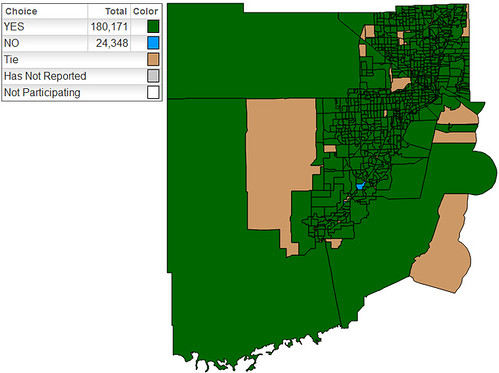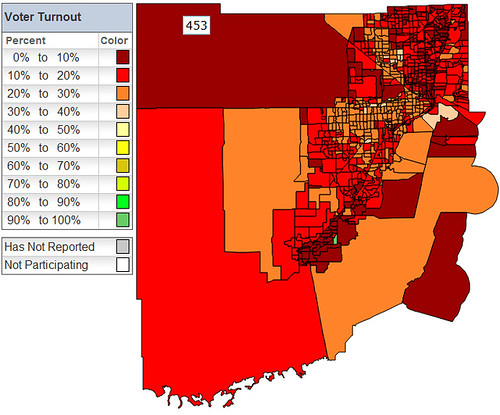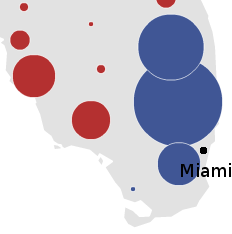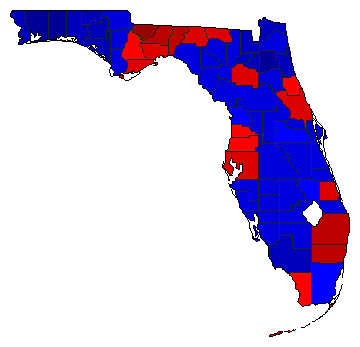By: Inoljt, http://thepolitikalblog.wordpr…
This is the fourth part of an analysis on the swing state Florida.
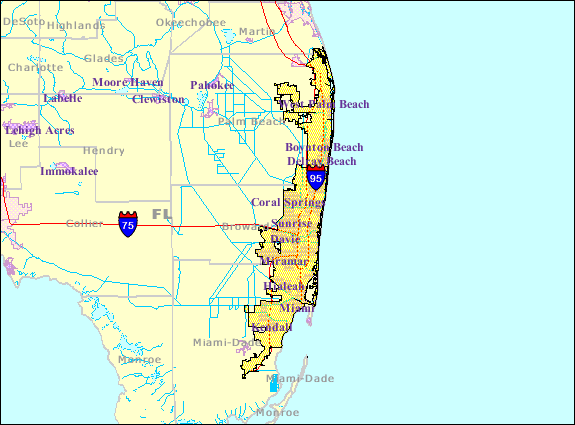
The Miami Metropolis
Diverse, populous, sun-baked – south Florida is far different from the rest of the state. It is the Democratic base, where liberals win their biggest margins.
Like most liberal places in this country, south Florida contains incredibly diversity; ethnic minorities compose a large share of the population. The region as a whole has reached majority-minority status. Blacks, Jews, Latinos ranging from Cubans to Nicaraguans, and many others call south Florida home.
Urban and densely populated – again, a trait common to Democratic-voting regions – South Florida is the seventh largest metropolitan region in the country. Most of its population resides along Florida’s southeastern shore, on a strip of land often only a few miles wide. More people voted in Miami-Dade and Broward than any other county out of the three swing states being reviewed (Florida, Ohio, and Pennsylania). Both counties are part of south Florida.

If south Florida, with its vast population, behaved like liberal Philadelphia, John Kerry would be president of the United States and Barack Obama would have won the state by double-digits.
That does not happen.
Continued below the flip.
While Palm Beach County and Broward County (the two top counties in south Florida) are solidly Democratic, they are far and away from the most liberal places in the country. Palm Beach, like many liberal-leaning suburbs, gives Democrats a 3:2 edge. Broward, a deeper shade of blue, gives Democrats two-thirds of its vote. Both places have voted this way consistently for the past four elections. Miami-Dade county, which is culturally and economically an entity by itself, behaves somewhat differently.
Here is how Barack Obama did in the Miami metropolis:
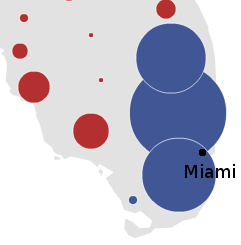
Like most Democratic candidates, he obtains huge margins. Compare the size of the circles here to those in the I-4 corridor (this can’t be done regarding northern Florida, unfortunately). They’re a magnitude bigger.
Several demographic factors lie behind Democratic strength in Palm Beach and Broward, the top two blue circles (Broward is the middle one). Palm Beach has a substantial black population, slightly above the national average. Latinos also compose a double-digit voting bloc – although many are Cubans, diluting their impact. Moreover, Palm Beach is the wealthiest county in Florida. While not all extremely rich areas vote Democratic, as a whole they tend to be bluer than the country at large.
Then there is the Jewish vote.
More Jews live in south Florida than anywhere else in the world, except for the state of Israel. Most are retirees living out their golden days in sunny Florida. Jews, much like their Catholic brethren, have a long history of voting for Democrats. In today’s world, their leftward stances on social issues drive them to Democrats. Mike Dukakis was the last Democrat to win less than 70% of the Jewish vote. The last Republican to beat a Democrat amongst Jews was Warren Harding, in 1920. And that was because 38% of them voted for a socialist.
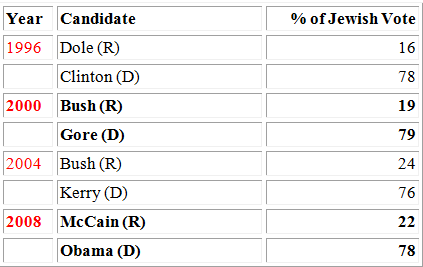
Up to 20% of Palm Beach County is Jewish, an important Democratic advantage. This constituency gave Obama 78% of the vote in 2008, contributing heavily to his overall victory. In neighboring Broward County, approximately 12-13% of the population is Jewish (a decrease in recent years). There too, Jews helped increase Obama’s margin in the county.
Broward County is similar in many respects to Palm Beach. It is one of Florida’s wealthiest counties. Latinos comprise more than one-fifth of the population (although, again, there are many Republican-leaning Cubans). There are a number of Jewish voters, as noted previously. Finally, African-Americans comprise slightly less than one-fourth of the population. Their relatively larger presence translates to a stronger Democratic vote compared with Palm Beach.
A final note. In 2000, Al Gore chose Senator Joe Lieberman, a Jewish-American, as his running mate. In large part due to this, he performed extraordinarily well in Palm Beach and Broward; Lieberman’s presence ensured unusually high Jewish support. In fact, Gore did better than Obama in the two counties, despite Obama’s far stronger national performance.
Florida’s razor-thin margin in 2000 is a major reason pundits today regard it as a swing state. However, as the above analysis indicates, much of Gore’s strength was unique to him (or rather, his running-mate). Relative to the generic Democrat, Gore overperformed. This was why John Kerry’s campaign, which competed so hard in Florida, was taken aback by the margin he lost by. To this day, Democrats assume that Florida is a more liberal place than it actually is. Al Gore, Joe Lieberman, and the Jewish vote are largely responsible for this.
